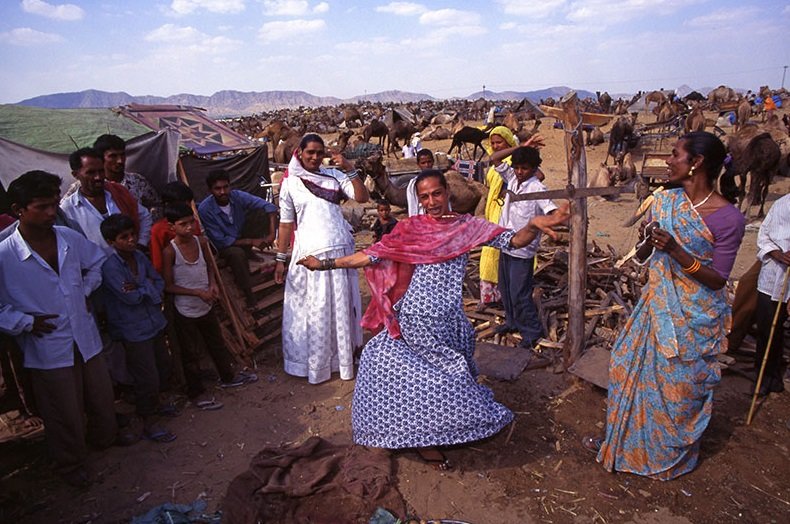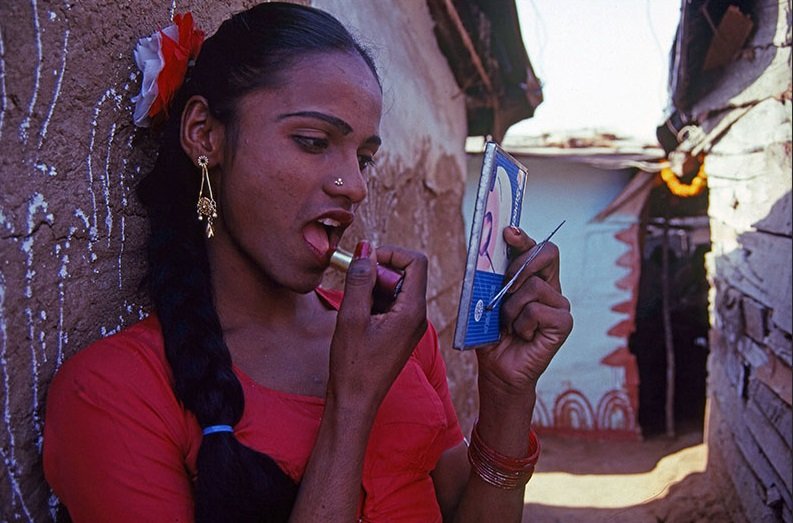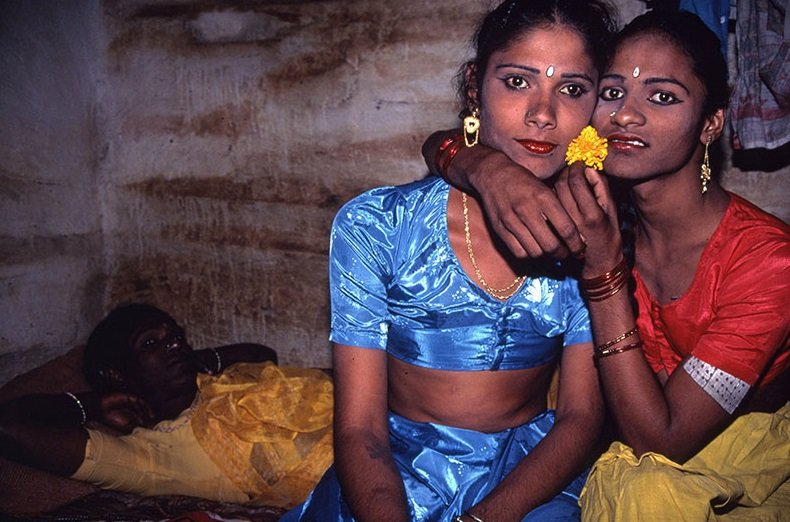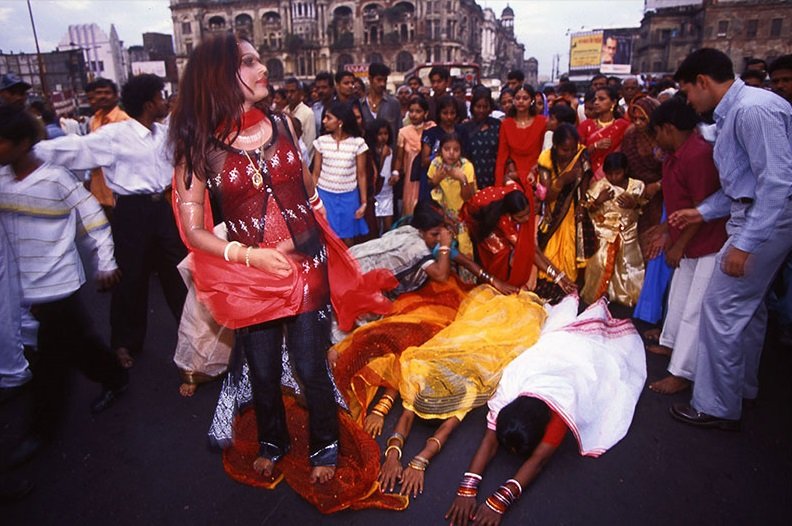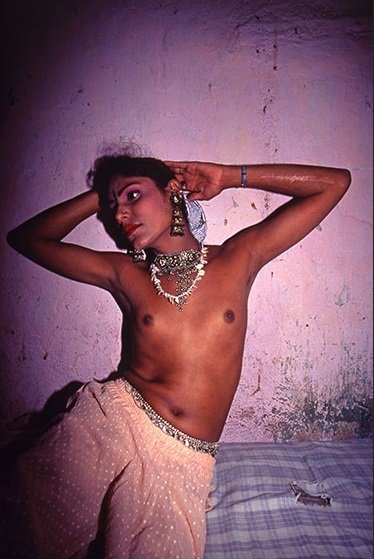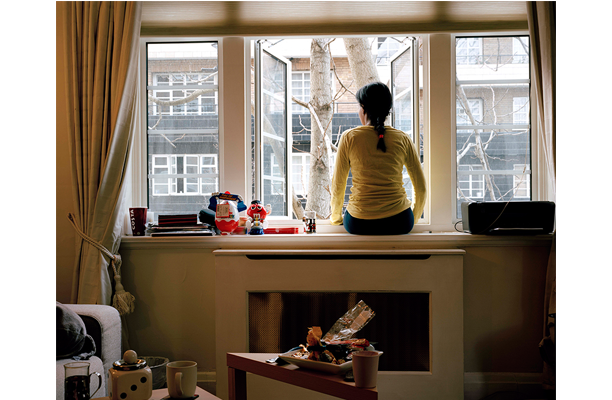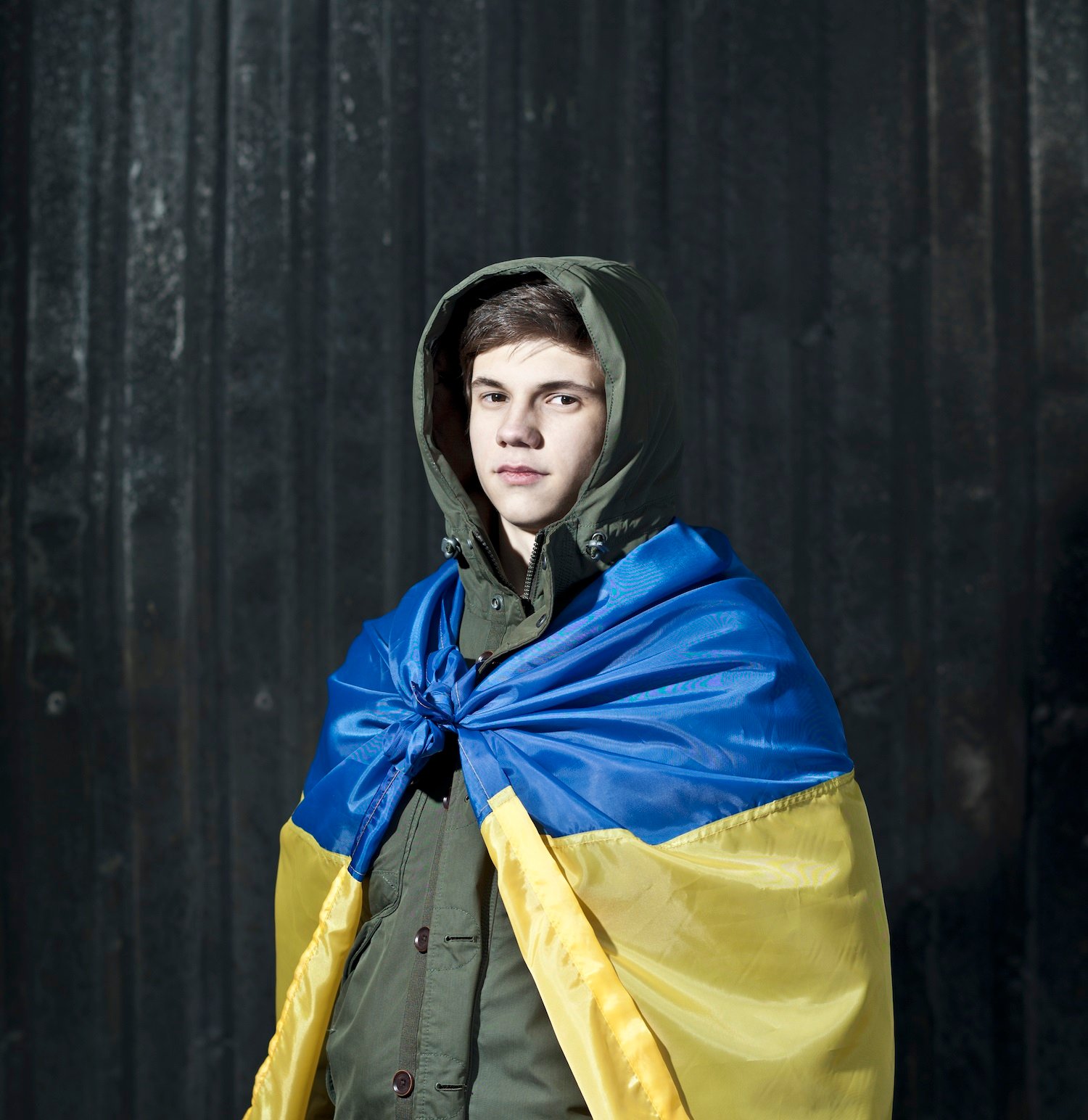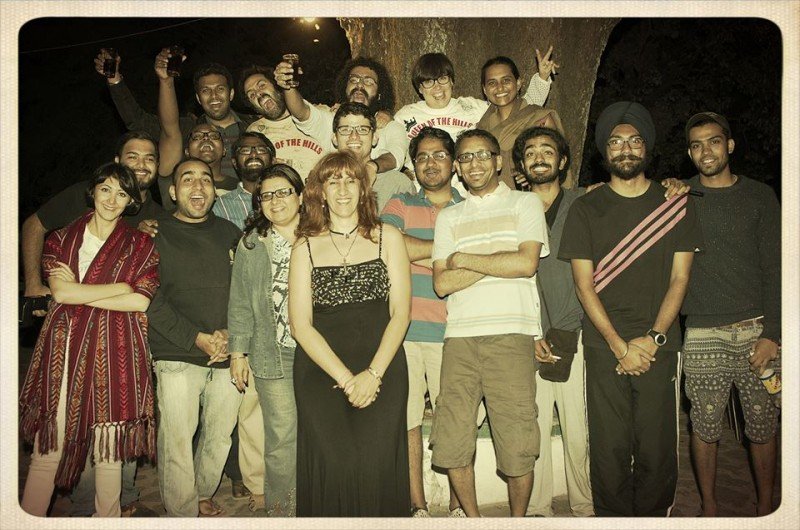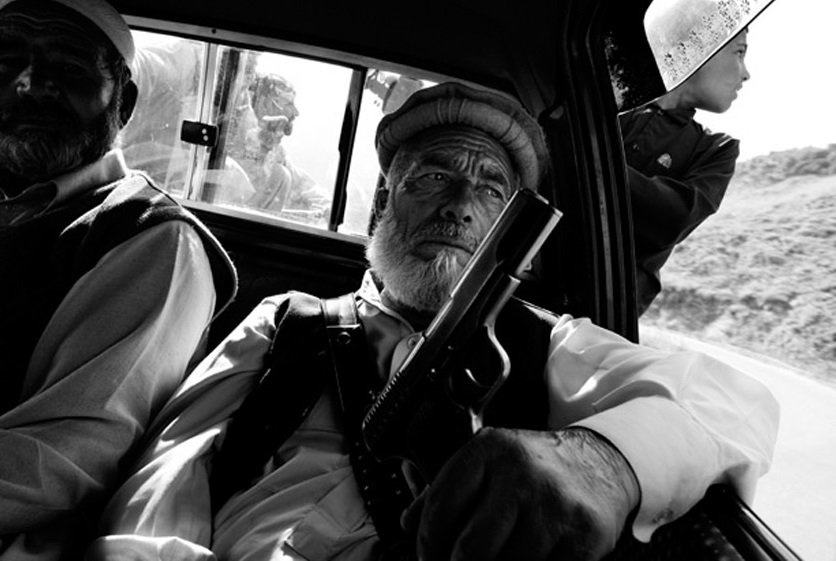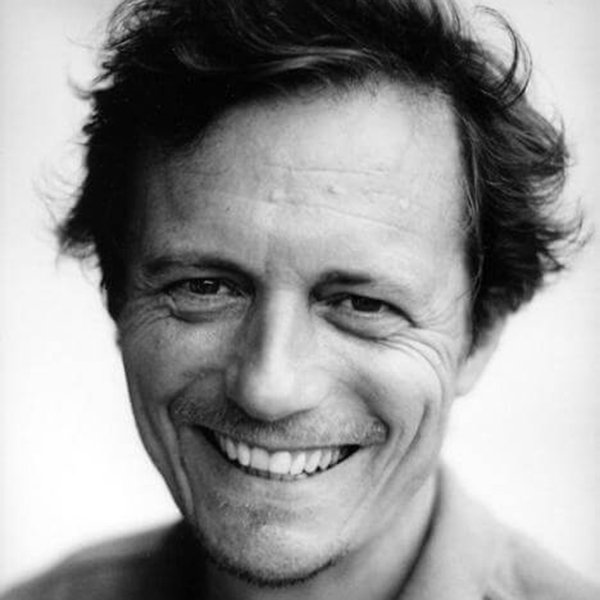THIS STORY CONTAINS EXPLICIT CONTENT
In Indian society, it is said that when a hermaphrodite baby is born in an Indian family, Hijras come to the house to receive the child and the baby is brought up as a Hijra. Though it may be probable that such cases existed, it is now no more than a legend. Most become Hijras through castration. Whenever I asked a Hijra, “What is Hijra?” they answered, “We are neither female nor male, but Hijra is Hijra.” Yes, this answer explains everything about them.
This understanding means the transcending of genders, to recognize the special gender, which is not categorized as female nor male but as the third gender, and to exist as the third gender. They wear female costumes when they engage in traditional works, and they enjoy this transvestism cordially. They wear their hear long, various accessories and elaborated make-up. Their passion to become beautiful seems to be stronger than that of women.
 Pokaraji is standing on the front of the blue wall in a bathroom. The bulges on her breast are not made of silicon. If castrated before around 13 years old, Hijra’s breast expands without any artificual work @ Takeshi Ishikawa
Pokaraji is standing on the front of the blue wall in a bathroom. The bulges on her breast are not made of silicon. If castrated before around 13 years old, Hijra’s breast expands without any artificual work @ Takeshi Ishikawa
When I asked why some had become Hijras, I received the following answers: “Though I was born as a man, I felt a feeling of wrongness or of uneasiness in being a man”; “I could not cope with the masculine role which the society requires of me”; “I could not feel that I was a man because my masculine genital is too small and impotent”. Hijras express a facet of the world peculiar to India, which is very different from the West and Japan, where the dualism concept divides genders into male or female. Hindu tantric belief maintains that the hermaphrodite is the complete gender, comprising both male and female principles.
Photography


